Software Quality Assurance – A Critical Cog in the Software Clockwork
While textbooks and academic courses might tell you that Software Quality Assurance (SQA) is a manual or automated testing process at the end of the development cycle to ensure a quality release/ product, this is just not true. An increasing number of conglomerates and companies have realized that SQA is a mindset which introduces several activities and processes throughout the development cycle. It is a continuous and ongoing cycle which is deeply integrated with software development to guarantee high quality. Contrary to popular belief, SQA engineers do not just test systems and report bugs.
“Software quality needs to be seen at a wider perspective relating to “goodness”. Looking beyond the explicit requirements into the realms of product risks and investigation of unknowns, determining the amount of delight or despair the customer will have while using the software. That is to say, the scale of how good (or bad) the software is to use”
– Dan Ashby writes in his blog.
On top of corroborating a bug free release/ product, SQA practices make sure that the software being developed meets the quality standards of coding practices, adheres to defined compliances and general industry standards, all-the-while meeting the client requirements.
For an effective quality assurance of the software, QA engineers are involved in the planning stages of the Software Development Life Cycle (SDLC). They are part of the process wherein the customer requirements are analyzed and the implementation plan is developed. Early involvement and continuous participation of SQA engineers warrants an effective and comprehensive testing. They explore ways to automate the test cases while the feature/ software is being developed. Additionally, these experts also ensure code and product quality, and maintain records and documentation. Furthermore, they manage the impact of changes in the software which includes updating the test plan to incorporate the changes. Thus, SQA is an important cog in the Continuous Integration Continuous Development, and Continuous Deployment (CI/CD) process.
An effective SQA process reduces the number of defects in the final product, guarantees stability, and satisfies client requirements, resulting in an improved customer satisfaction and decreased maintenance cost of the product. The QA process lessens the chances of re-work, provides a sense of predictability, and saves time and money.
Downloads
Article (PDF-276 KB)MOST POPULAR INSIGHTS
- Optimizing Container Image Pull Efficiency: A Technical Deep Dive
- Streamline Your Application Delivery with AWS AppStream 2.0: An Introduction
- Secure Communication in a Hybrid Cloud – A Case of Site-to-Site VPN on AWS
- Understanding, Communicating and Making Informed Decisions with Data Visualization
- Cross-Account, Cross-Region Backups in AWS
How Our SQA Experts Do It
Among many ways to ascertain the quality for any product or release, there are methods in which Xgrid’s Quality Assurance experts ensure premium quality deliverables:
Shift Left Approach
Shift left testing is quickly becoming the industry standard wherein the QA team is involved in the software development cycle from the very beginning. Our testing and validation cycles are initiated concurrently with the analysis of client requirements. We follow this approach to identify bugs and issues at an early stage. This tactic reduces the development cost, thus increasing efficiency, customer satisfaction, and drastically expediting the development process.
Communicate Effectively and Timely
Communication is the key. While delivering a quality product in a short time-span, Xgrid makes sure that the engineering techniques are paired up with effective and timely communication to accelerate productivity and efficiency among the SQA and Dev teams. In all phases of SDLC, Quality Assurance and Developers’ teams at Xgrid are kept well-informed of any changes or new requirements. Our prompt, clear and focused feedback results in minimized confusions and promotes professional growth.
Take Your Time to Test
Xgrid’s QA team does not test the application in haste. Instead, we take our sweet time with it because we realize that ensuring the best quality of a service/ product is not a race to be won. Rather, it is a continuous progressive cycle. Rushing the execution of test cases in a crunched timeline can have a negative impact on the quality of deliverables. We carry out Smoke and Sanity test cycles to make sure that major features are not broken. Additionally, minute details and non-critical functionalities are tested as per the available timeline.
Be the Tester End User
We, at Xgrid, wear the tester’s hat when testing an application’s functionality. However, when we test for usability, our experts walk a mile in the end user’s shoes. Feature development and testing go hand-in-hand. We realize that if our testers do not use the developed feature as per the end user’s needs, the quality of the deliverables may be affected.
To put things into perspective, let’s take a simple login page example: The user enters login credentials to proceed. The validation checks are added. The “Forgot Password” button works fine. Everything seems to be okay. But there is a high chance that when the user presses the back button, the credentials previously entered are pre-filled on that screen i.e. the fields have not been cleared. In this case, the feature development is complete, validations are added, and the feature itself is QA verified. But this scenario, which is a normal end user behavior, leads to serious security threats.
User interaction with the feature is as crucial as its proper functioning. For this matter, the internal QA builds are tested as release candidates and the application is thoroughly tested keeping business needs in mind.
Test the Product According to Its Maturity
Product maturity plays an important role in testing. A growing product undergoing major changes needs to be tested in all aspects. With repetitive test cycles, we radically reduce the number of bugs which results in a stable quality product. We follow the three stages of product maturity defined in Leading Quality:
Validation: At this stage, the product is rigorously tested to be a good market fit and be stable on its own. Our approach here is to test the major user workflows without any critical bugs. We opt for manual testing in this phase since automation is not a priority because of the high development cost.
Predictability: This is the stage where a product is stable in its major workflows and growing in terms of its users. The product becomes predictable at this point and therefore, this is the right time to predict any bugs that may occur due to development in the future. Our testing approach is detailed and exploratory. Automation is also introduced to run the regression test cycles.
Scaling: In this phase, the software is growing in the existing user scale. Even a minor bug can adversely impact a large number of users. There is an increased focus on scale and load testing. We test the product in detail to avoid even the smallest bugs and to increase its performance. This is a good time to look into the optimizations of battery, CPU and GPU consumption. Effective QA strategy is crucial at every stage, and given the nature of the product, a combination of these test approaches is also used.


Established in 2012, Xgrid has a history of delivering a wide range of intelligent and secure cloud infrastructure, user interface and user experience solutions. Our strength lies in our team and its ability to deliver end-to-end solutions using cutting edge technologies.
OFFICE ADDRESS
US Address:
Plug and Play Tech Center, 440 N Wolfe Rd, Sunnyvale, CA 94085
Pakistan Address:
Xgrid Solutions (Private) Limited, Bldg 96, GCC-11, Civic Center, Gulberg Greens, Islamabad
Xgrid Solutions (Pvt) Ltd, Daftarkhwan (One), Building #254/1, Sector G, Phase 5, DHA, Lahore





